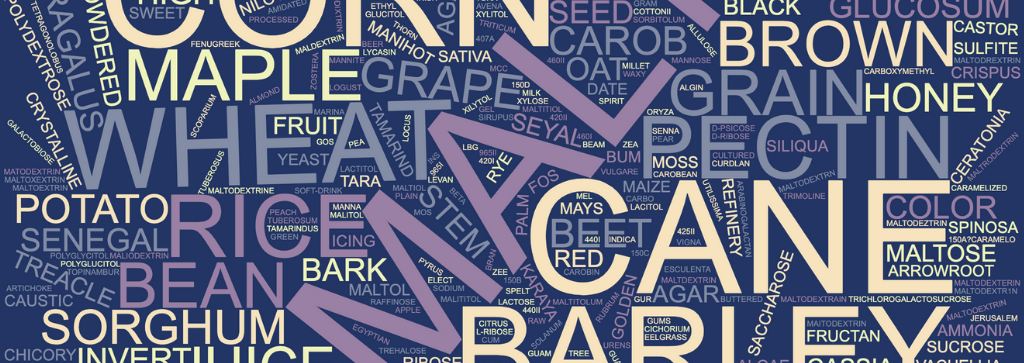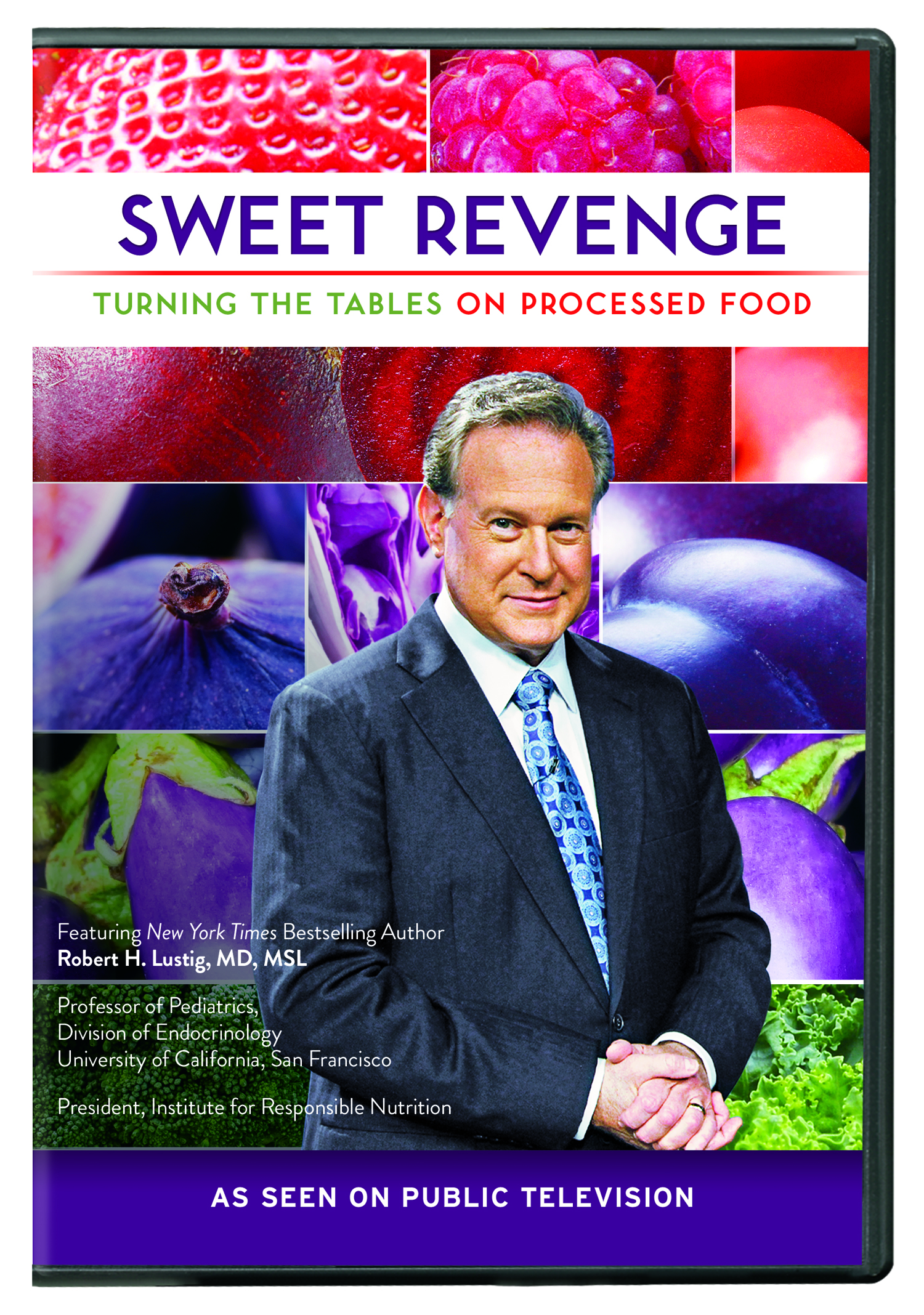
Five sugar and sweetener filters that will help you filter the entire food supply effortlessly!
In 2013, Dr. Robert Lustig wrote an e-book called 56 Names For Sugar: A Shopper’s Guide. At the time, people seemed amazed that there were so many. With added sugar in 74% of the food supply, it’s clear that the first step to controlling sugar in the diet is to know what and where they are.
Fast forward to 2023, a decade later, and thanks to the ground-breaking Perfact platform, we have learned that there are hundreds of names for sugar names in the food supply (262 currently listed in the added sugar repository). The challenge for any consumer seeking to improve their health seems almost insurmountable in the face of the tsunami of sugars showing up in foods and beverages.
Looking at the sugars with a discerning eye is essential, but what about diet sweeteners? There are so many of them; are they safe? The good news is that Perfact has created a sugar-sweetener-busting tool, based upon Dr. Lustig’s expert advice, that allows consumers to filter out all products with added sugar or sweeteners simply by flipping a switch. The Perfact filtering technology can also be applied by commercial interests genuinely interested in reengineering their products with low or no sugar or using healthy sweeteners only.
Just naming sugars and filtering them out isn’t enough. We need to understand their properties and potential metabolic effects better. In this regard, the RHL Research Foundation is collaborating with Perfact to create and maintain the Sugar Matrix, the world’s first database of sugars – their sources, processing, and metabolic impacts. If you want to learn more and get involved, click here.
Consumers can now access the Perfact platform, free of charge, and effortlessly find the healthiest products available — at your store!
no added sugars
There is no nutritional requirement for any sugar in the human diet, and added sugars are dangerous at long-term high doses. With hundreds of caloric sugars in 74% of the food supply, screening these out of packaged foods and beverages is impossible. This filter results from years of work identifying hundreds of sugars that often go by names easily confused with healthy ingredients.
This filter will consistently be updated with new names for sugar, so you won’t have to monitor the food supply — we will. When applied, this filter will screen out all products with “added sugar,” which includes any sugars added to foods or beverages during processing or preparation.
It is still important to monitor total sugars, including sugars found naturally in foods such as fruit (fructose) and milk (lactose). Be aware that many manufacturers find loopholes in the regulations, using dates, fruit, or other ingredients that are not technically classified as “added sugar” but can functionally add significant total sugar to the product.
“safe” added sugar (max 4 grams added sugar per serving
This filter allows one teaspoon (4 grams) of added sugar per serving. There is no minimum requirement for any sugar in the human diet, and 0% added sugar is ideal. Working with an international Science Advisory Team we established this as a maximum threshold for each serving since most packaged foods and beverages contain added sugar. Generally speaking, these lower amounts of added sugar align with global guidelines for reducing added sugar consumption. The World Health Organization‘s (WHO) recommendation is that no more than 10% of an adult’s calories – ideally less than 5% – should come from added sugar or natural sugars in honey, syrups, and fruit juice. For a 2,000-calorie diet, 5% would be 25 grams. Fun fact: This filter returns fewer results than the “No-Added-Sugar” filter, which doesn’t seem logical. You can blame the USDA since 44% of products in their branded food database have faulty “Added Sugar” info, so we cannot recommend those because we don’t know the accurate amount of added sugar. So, in reality, the number should be almost double, but – alas – we don’t have better data.
no unsafe sweeteners
(acesulfame, advantame, alitame, aspartame, aspartame-acesulfame salt, maltotame, neotame, saccharin, saccharin sodium, sodium cyclamate, or sucralose)
Many consumers are choosing to use non-caloric sweeteners. However, a growing body of research is raising concerns that some of these sweeteners may present health risks (reference links below). The five sweeteners here (others may be added as the research evolves) have enough evidence raising concerns that filtering them out from the diet may be advisable. Research indicates that these sweeteners present the most risk, but it is still advisable to be aware of the general concerns emerging about all non-caloric sweeteners.
no sugar alcohols
Individual tastes and reactions to sugar alcohols vary widely, but there is enough concern about side effects that you might choose to eliminate these entirely from the products you consume. Sugar alcohols aren’t easily metabolized, and consuming too much of them can result in digestive upset, including gas, bloating, and diarrhea. Despite having no or minimal calories, non-caloric sweeteners can still result in negative metabolic responses such as microbiome and gut disturbances and weight gain. Recently, one study found a relationship between erythritol and heart disease. Research is still sparse on these topics, but there is enough evidence to indicate that these sweeteners aren’t risk-free.
no sweeteners
(all from “no unsafe sweeteners“ and “no sugar alcohols“ plus all other sweeteners)
Play it safe and eliminate all non-caloric sweeteners from your diet. It can be challenging to do so, especially when looking for alternatives to sugar. Still, you may be particularly sensitive to these substances or have enough evidence to believe that these food additives are not suitable for you. The list of sweeteners will be kept current, so you won’t have to think about it when new non-caloric sweeteners reach the marketplace.
Click here to easily access this new technology that could have a lasting effect on your health and well-being.
REFERENCES
General References
- Fat Chance: Beating the Odds Against Sugar, Processed Food, Obesity, and Disease, by Dr. Robert Lustig
- Metabolical: The Lure and the Lies of Processed Food, Nutrition, and Modern Medicine, by Dr. Robert H. Lustig. 1000 references at https://metabolical.com/references
- Sweet Revenge: Turning the Tables on Processed Food, PBS Documentary.
No Added Sugar Filter
- Sugar the Bitter Truth, Lecture by Dr. Robert H. Lustig, Osher Center, UCSF
- Sugar Science, the unsweetened truth, UCSF
- Hidden in Plain Sight: Added sugar is hiding in 74% of packaged foods, Sugar Science, UCSF
- Sugar, Sugar . . . Not So Sweet for the Liver. Miriam B. Vos, Michael I. Goran, Gastroenterology, vol. 153, no. 3, pp. 642–645, 2017. DOI: 1053/j.gastro.2017.07.029
- Effects of dietary fructose restriction on liver fat, de novo lipogenesis, and insulin kinetics in children with obesity. Schwarz J-M, Noworolski SM, Erkin-Cakmak A, et al. Gastroenterology 2017;153:743–752. DOI: 1053/j.gastro.2017.05.043
- Dietary Sugars Alter Hepatic Fatty Acid Oxidation via Transcriptional and Post-translational Modifications of Mitochondrial Proteins.Samir Softic, et al, Cell Metab. 2019 Oct 1; 30(4): 735–753.e4. DOI: 1016/j.cmet.2019.09.003
- The role of sugar-sweetened beverages in the global epidemics of obesity and chronic diseases. Vasanti S Malik, Frank B Hu, Nat Rev Endocrinol, 2022 Apr;18(4):205-218. DOI: 1038/s41574-021-00627-6.
“Safe” Added Sugar (max 4 grams added sugar per serving) Filter
First and foremost, there is no dietary requirement for added sugar, but if added sugar is included in the diet, it should be no more than 5% of total caloric intake. The threshold of added sugar chosen for this filter helps you avoid products high in added sugar, as the total amount of added sugar consumed can easily accumulate throughout the day.
Guideline: sugars intake for adults and children, World Health Organization (WHO) website
No Unsafe Sweeteners (aspartame, sucralose, acesulfame, neotame, and saccharin) Filter
All non-caloric and non-nutritive sweeteners potentially have concerns. There is evidence indicating that even though a sweetener may have low or no calories, the endocrine system can still react to the substance as if it is sugar, causing negative metabolic effects.
Study: Artificial sweetener may disrupt body’s ability to count calories, Purdue News
“The body’s natural ability to regulate food intake and body weight may be weakened when this natural relationship is impaired by artificial sweeteners,” said Davidson, an expert in behavioral neuroscience. “Without thinking about it, the body learns that it can use food characteristics such as sweetness and viscosity to gauge its caloric intake. The body may use this information to determine how much food is required to meet its caloric needs.” – Dr. Terry Davidson
The overall impact of NNS on metabolic health remains controversial.
“Despite inclusion in thousands of products, and consumption by billions of people, the molecular effects of ingesting synthetically sweetened food are not well understood. Moreover, there is conflicting evidence from both human and animal studies as to whether or not synthetic sweeteners interact with overall physiology or regulation of energy homeostasis.” – Sucralose Promotes Food Intake through NPY and a Neuronal Fasting Response
The article A Pavlovian approach to the problem of obesity, published in the International Journal of Obesity Related Metabolic Disorders provides numerous scientific references.
“The majority of observational studies addressing synthetic or non-nutritive sweeteners (NNS) consumption show an association with metabolic dysregulation.”
Numerous studies show that:
Animals consuming synthetic sweeteners
- exhibit weight gain
- accumulate body fat
- have impaired glucose homeostasis
- exhibit weaker caloric compensation
- have impaired glucose homeostasis
Synthetic sweeteners
- act through the microbiome
- reduce validity of “sweetness” to predict caloric content
Observational studies addressing NNS consumption reveal
- an association with metabolic dysregulation.
- significant correlation with weight gain
- an association with a higher incidence of metabolic syndrome when compared to non-users
- significant risk factors for metabolic disease in children, middle-aged adults, and in the elderly
One study showed that NNS consumers exhibit reduced weight gain; however, these participants showed an increased risk for developing diabetes in an 8-year follow-up.
Human intervention studies have shown that ingestion of NNS can
- enhance appetite
- promote hunger
- increase food consumption
- result in impaired glucose tolerance
However, other studies have reported no major effect or weight loss as a result of consuming NNS.
All the studies referenced here are cited in the comprehensive article Sucralose Promotes Food Intake through NPY and a Neuronal Fasting Response, Cell Metabolism. DOI: https://doi.org/10.1016/j.cmet.2016.06.010
No Sugar Alcohols Filter
Your body cannot digest most sugar alcohols, so they travel to the large intestine, where your gut bacteria break them down. For this reason, if you eat a lot of sugar alcohols in a short period of time, you may experience gas, bloating, and diarrhea.
“Despite the many positive effects of sugar alcohols, their consumption is frequently linked also to irritable bowel syndrome (IBS) and abnormal flatulence, which affect quality of life negatively and result in a considerable economic burden in terms of health-care costs.” – Gastrointestinal Disturbances Associated with the Consumption of Sugar Alcohols with Special Consideration of Xylitol: Scientific Review and Instructions for Dentists and Other Health-Care Professionals, International Journal of Dentistry. DOI: 10.1155/2016/5967907
“It might be worth using sugar alcohols in food products marketed to patients with diabetes and individuals considering energy restricted diets more frequently but bearing in mind their gastrointestinal effects. However, an optimal diet should be based on fresh unprocessed foods with the minimal amounts of food additives, and then the sugar replacers such as sugar alcohols or even artificial sweeteners will not have a significant role in the daily diet.” – Sugar alcohols—their role in the modern world of sweeteners: a review. European Food Research & Technology. (Article provides extensive citations)
No sweeteners (3 + 4) + all the rest Filter
“Non-nutritive sweeteners continue to be a staple in the Western diet. However, the health-related safety of NNS consumption remains to be a controversial topic. Recent reports on the role of NNS promoting shifts in gut microbiota composition and reports linking the gut microbiota to insulin signaling, confirm the importance of studying the physiological effects of NNS. The exact mechanisms of pathological changes induced by NAS are still under speculation.” – Non-Nutritive Sweeteners and Their Implications on the Development of Metabolic Syndrome, Nutrients. doi: 10.3390/nu11030644
“Replacing free sugars with NSS does not help with weight control in the long term. People need to consider other ways to reduce free sugars intake, such as consuming food with naturally occurring sugars, like fruit, or unsweetened food and beverages,” says Francesco Branca, WHO Director for Nutrition and Food Safety. “NSS are not essential dietary factors and have no nutritional value. People should reduce the sweetness of the diet altogether, starting early in life, to improve their health.” – WHO advises not to use non-sugar sweeteners for weight control in newly released guideline, World Health Organization
“Some governments and influential health organizations recommend diets low in sweetness based on a widespread and long-standing belief in a causal chain: A highly sweet diet leads to changes in perception of sweet foods and beverages, which in turn leads to overconsumption of sugar, which finally leads to negative health outcomes. However, no link in this proposed causal chain has strong empirical support.” – Perspective: Measuring Sweetness in Foods, Beverages, and Diets: Toward Understanding the Role of Sweetness in Health – Advances in Nutrition. DOI: 10.1093/advances/nmaa151
Learn More!

Sweet Revenge: Turning the Tables on Processed Food – Dr. Robert Lustig, Professor of Pediatrics, Division of Endocrinology, University of California, San Francisco explains the negative consequences of eating processed food with excess sugar. Dr. Lustig offers answers on how to improve your life by changing your diet.
Click here to rent this superb PBS program for the special price of $1.00







